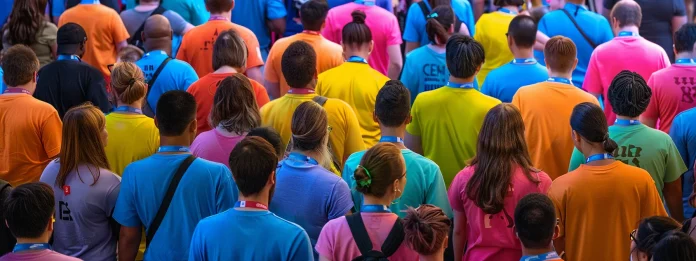Are you looking for effective ways to boost your brand visibility? Custom apparel, such as shirts from American Apparel, can significantly enhance recognition among your target audience. This article will explore strategies for developing impactful custom apparel, leveraging it in marketing campaigns, and measuring success. By implementing these strategies, businesses can address common challenges like low brand awareness and enhance team building initiatives. Engaging with this content will provide actionable insights to promote your product and elevate your brand’s presence in the market.
Key Takeaways
- Custom apparel acts as effective mobile advertising for enhancing brand visibility
- Quality materials and designs contribute to positive customer perceptions and brand loyalty
- Engaging customers through social media amplifies brand reach and visibility
- Employee participation can transform team members into enthusiastic brand ambassadors
- Limited edition items create urgency, fostering customer engagement and loyalty
Understanding the Impact of Custom Apparel on Brand Visibility

Custom apparel plays a crucial role in brand visibility through its strong connection to brand recognition. As a form of promotional merchandise, it acts as mobile advertising, allowing consumers to effortlessly showcase their affiliation with brands. Additionally, the psychology behind wearing brand apparel highlights the impact of personalization and embroidery, reinforcing brand loyalty and engagement.
The Connection Between Apparel and Brand Recognition
Custom apparel significantly enhances brand recognition by acting as a visual representation of an organization’s identity. When employees wear branded workwear, it fosters a consistent and professional image that positively influences customer perception. This integration of apparel into the overall branding strategy not only elevates the organization’s visibility but also reinforces a sense of cohesion among team members, leading to improved customer service interactions.
The effectiveness of custom apparel in building brand recognition lies in its ability to create familiarity. When customers see a brand logo on clothing, it serves as a reminder of their previous interactions, fostering a connection that can enhance loyalty. By incorporating well-designed apparel into their promotional strategy, organizations can ensure their brand remains top-of-mind, leading to increased customer engagement and ongoing advocacy in the marketplace.
How Custom Clothing Acts as Mobile Advertising
Custom clothing serves as effective mobile advertising by allowing brands to extend their reach beyond traditional marketing channels. When customers wear apparel that features a brand’s logo or message, they promote your brand wherever they go, effectively transforming everyday interactions into opportunities for visibility. This approach fosters a sense of pride among wearers, as they visibly represent a culture or community associated with the brand, driving customer engagement and interest.
Moreover, utilizing techniques such as screen printing can enhance the appeal and quality of custom apparel, ensuring that logos and designs remain vibrant and eye-catching. Businesses that adopt this strategy not only solidify their presence in consumers’ minds but also create a sense of belonging and loyalty. Effective use of custom clothing can lead to increased word-of-mouth promotion, enhancing brand loyalty:
- Transforming customers into brand ambassadors
- Fostering a sense of community around the brand
- Building customer pride in representing the brand
- Enhancing visibility through everyday interactions
The Psychology Behind Wearing Brand Apparel
The psychology behind wearing brand apparel reveals significant insights into employee morale and customer engagement. When individuals don clothing emblazoned with a brand’s logo, they often experience a heightened sense of pride and belonging, which positively impacts their overall morale. This emotional connection transforms them into enthusiastic proponents of the brand, effectively turning employees and customers alike into walking billboards, thereby enhancing visibility and brand credibility in various public settings.
Developing Effective Custom Apparel Strategies
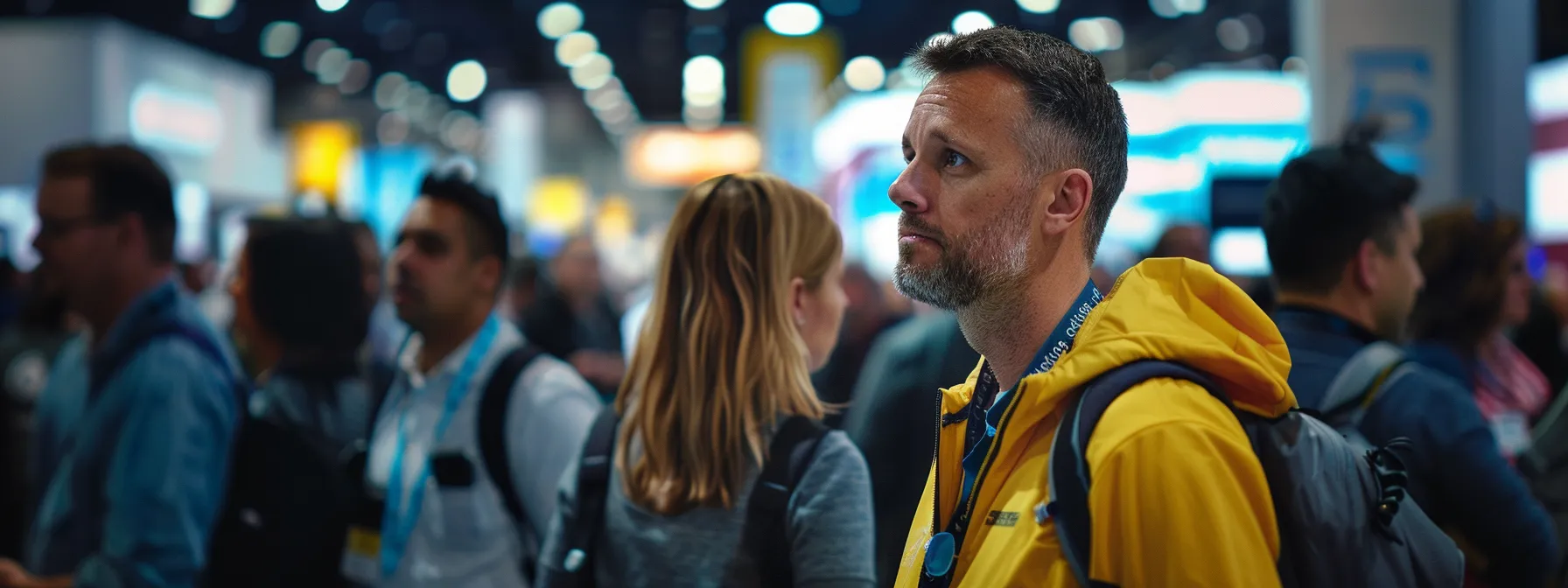
To enhance brand visibility through custom apparel, businesses must first identify their target audience and design apparel that aligns with their brand identity. Selecting quality materials can significantly improve perception, while integrating branding elements such as graphics ensures consistency. These strategies not only maximize return on investment but also create memorable experiences at events like trade shows, enhancing visibility within the target market.
Identifying Your Target Audience for Apparel
Identifying the target audience for custom apparel is essential for enhancing brand visibility and ensuring alignment with corporate identity. Businesses need to analyze demographics and psychographics to create products that resonate with their audience. This understanding allows them to design apparel that not only meets consumer preferences but also effectively communicates the brand’s values, fostering loyalty and engagement.
Moreover, catering to specific preferences helps transform customers into brand ambassadors. For instance, offering environmentally friendly apparel options can attract consumers who prioritize sustainability, thereby capturing attention and enhancing brand reputation. By tailoring their strategies to meet the needs of their audience, companies can create lasting impressions and cultivate a community that reflects their brand ethos, driving ongoing customer loyalty.
- Analyze audience demographics and psychographics
- Align designs with corporate identity
- Create tailored apparel options to foster loyalty
- Utilize environmentally friendly materials for broader appeal
- Transform customers into brand ambassadors
Designing Apparel That Reflects Your Brand Identity
Designing apparel that reflects a brand’s identity is vital for enhancing brand visibility and fostering brand loyalty. Businesses can create compelling branded swag, such as polo shirts, that resonate with their target audience and showcase the brand’s values. By utilizing colors, logos, and designs that align with the overall branding strategy, companies can ensure their apparel not only promotes brand awareness but also connects emotionally with customers.
Incorporating feedback from customers and employees can lead to the creation of custom apparel that effectively represents the brand’s culture and mission. Engaging customers through social media to gather insights on preferred styles and features can make a significant difference in the design process. This collaborative approach not only boosts the likelihood that the apparel will be well-received but also helps forge a deeper connection with the audience, ultimately driving brand loyalty and advocacy.
Selecting Quality Materials to Enhance Perception
Selecting quality materials for custom apparel is essential for enhancing both brand perception and employee morale. Apparel made from durable cotton, for instance, is not only comfortable but also conveys a sense of reliability and care towards the employees wearing it. When companies invest in high-quality jackets and other clothing items, they signal commitment to their brand values and the well-being of their staff, which can ultimately lead to increased productivity and a positive work environment.
Integrating Branding Elements Seamlessly
Integrating branding elements into custom apparel serves as a strategic touchpoint for enhancing brand visibility. By harmoniously blending logos, slogans, and color schemes, businesses can create merchandise that reinforces their identity while promoting teamwork among employees and customers alike. For instance, a company that showcases its sustainability commitment by using eco-friendly materials not only appeals to conscious consumers but also demonstrates a clear alignment with modern values.
Moreover, analyzing customer feedback and purchasing behavior through analytics can guide the effective integration of branding elements. By understanding which designs resonate most with the target audience, businesses can adjust their merchandising strategies accordingly. This approach ensures that promotional products not only capture attention but also foster a deeper connection with the brand, resulting in improved brand loyalty and advocacy.
- Blend logos, slogans, and color schemes for cohesive branding.
- Use eco-friendly materials to appeal to sustainability-conscious consumers.
- Leverage analytics to assess customer preferences and adjust designs.
- Enhance teamwork through shared branded appearances.
- Foster brand loyalty and advocacy with meaningful merchandise.
Leveraging Custom Apparel for Marketing Campaigns
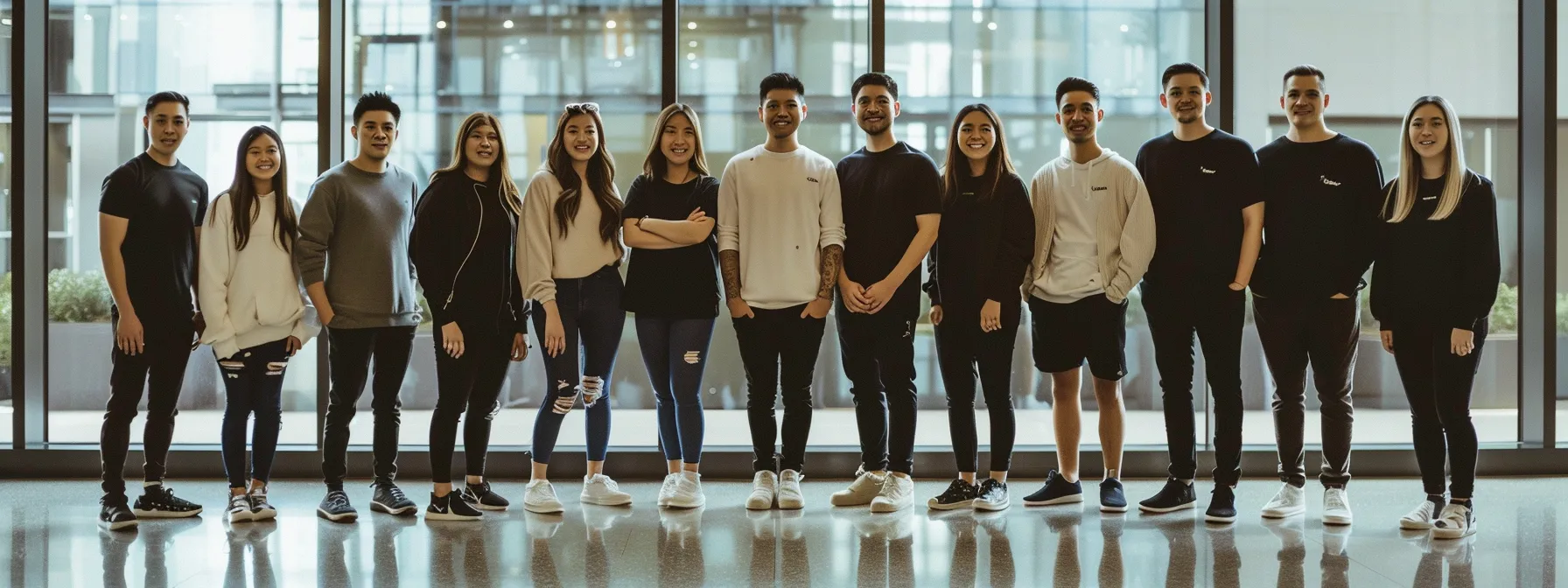
Branded merchandise plays a pivotal role in marketing campaigns, particularly when promoting events with customized apparel that reflects a brand’s ethos. Utilizing apparel in social media giveaways and contests can boost engagement and visibility. Collaborating with influencers to wear brand gear showcases creativity, enhancing reputation and reach. Encouraging employee participation further solidifies brand identity, driving awareness and loyalty.
Promoting Events With Branded Merchandise
Promoting events with branded merchandise provides an effective avenue for enhancing brand visibility and building confidence among participants. When businesses distribute custom apparel featuring their logos at events, they not only create a professional image but also foster a sense of community and collaboration among attendees. This shared experience encourages individuals to feel connected to the brand, enhancing overall engagement and reinforcing brand loyalty.
Furthermore, utilizing branded merchandise during events can significantly amplify marketing efforts. For instance, companies can host contests or giveaways that encourage attendees to wear their custom apparel, effectively turning them into brand ambassadors. By creating an environment where participants proudly display their affiliation, organizations increase visibility and strengthen relationships, ultimately leading to a more memorable and impactful event experience:
Using Apparel in Social Media Giveaways and Contests
Using custom apparel in social media giveaways and contests can significantly boost brand engagement. For instance, brands can encourage followers to share photos wearing the apparel, creating organic visibility across social platforms. This form of user-generated content amplifies reach, as participants share their excitement, effectively turning them into brand ambassadors.
Furthermore, implementing engaging participation mechanics, such as tagging friends or using specific hashtags, can enhance outreach and foster community around the brand. By rewarding followers with custom apparel, businesses create a tangible connection with their audience, leading to increased loyalty and deeper brand affinity. This strategy not only enhances brand visibility but also promotes positive interactions with the brand’s messaging:
Collaborating With Influencers to Wear Your Brand
Collaborating with influencers provides brands with an effective avenue to showcase custom apparel, leveraging the influencers’ established audiences to enhance visibility. Influencers who align with the brand’s values can authentically represent the apparel, introducing it to their followers in a relatable context. This partnership not only increases reach but also builds credibility, as followers are more likely to trust recommendations from personalities they admire.
To maximize the impact of influencer collaborations, brands should focus on selecting influencers whose demographic matches their target audience. By encouraging influencers to engage with their followers through photos and stories featuring the custom apparel, brands can foster a sense of community and belonging. This dynamic interaction promotes brand loyalty and encourages consumers to consider the brand more seriously in their purchasing decisions:
- Identify and collaborate with influencers who share brand values.
- Encourage authentic engagement through social media posts and stories.
- Leverage the influencer’s audience to increase brand credibility.
- Create a sense of community around the brand through shared experiences.
Encouraging Employee Participation in Wearing Brand Apparel
Encouraging employee participation in wearing brand apparel is vital for enhancing brand visibility and fostering a cohesive company culture. When employees wear customized clothing with the company logo, it transforms them into brand ambassadors, creating a consistent visual presence both in and out of the workplace. This not only reinforces brand identity but also boosts morale by instilling a sense of pride and belonging among the workforce.
To maximize the impact of custom apparel, businesses can implement initiatives like “Dress Down Days” where employees are encouraged to wear branded gear, or create contests that reward the most creative use of company apparel. Such strategies promote employee engagement and help generate buzz on social media as employees showcase their branded apparel, ultimately contributing to increased brand awareness and customer loyalty. Key actions include:
- Host contests to promote creative use of apparel.
- Implement “Dress Down Days” as a fun initiative.
- Encourage social media sharing of branded outfits.
Enhancing Customer Engagement Through Custom Apparel
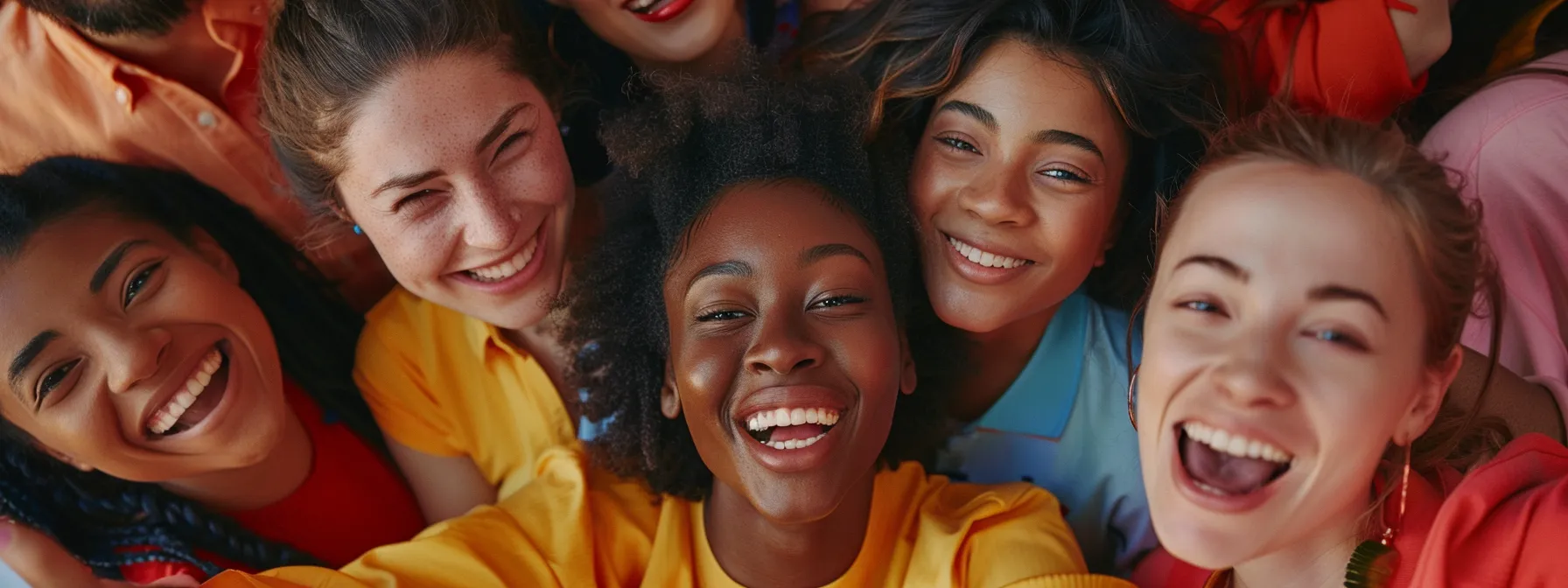
Offering limited edition items creates urgency, prompting customers to act quickly and engage with the brand. Implementing loyalty programs with exclusive apparel rewards further incentivizes participation and strengthens customer relationships. Additionally, collecting user-generated content featuring branded apparel allows brands to leverage authentic endorsements, enhancing visibility and fostering community. Each of these strategies contributes significantly to improving brand visibility through customer engagement.
Offering Limited Edition Items to Create Urgency
Offering limited edition custom apparel can significantly enhance brand visibility by creating a sense of urgency among customers. When brands introduce exclusive items, they prompt consumers to act quickly to secure their purchase, which can lead to increased sales and brand engagement. For example, companies can leverage seasonal themes or special events to launch limited edition merchandise, enticing customers to associate these items with special occasions related to the brand.
This strategy not only drives immediate sales but also strengthens customer loyalty as individuals feel they are part of an exclusive club when they own unique branded apparel. By promoting these pieces through social media and email campaigns, brands can create buzz and excitement that extend beyond the initial sale, leading to a community of engaged customers who advocate for the brand. This approach culminates in enhanced brand recognition and visibility:
Implementing Loyalty Programs With Exclusive Apparel Rewards
Implementing loyalty programs that offer exclusive apparel rewards can significantly enhance customer engagement and strengthen brand loyalty. Customers appreciate being recognized for their continued support, and exclusive branded merchandise serves as a tangible token of that recognition. For example, offering limited edition t-shirts or jackets to loyal customers can create a sense of value and community among the brand’s advocates, motivating them to promote the brand within their networks.
These loyalty programs not only incentivize repeat purchases but also encourage customers to actively participate in the brand’s narrative. When organizations promote their exclusive apparel rewards through social media and email campaigns, they generate excitement and discussion around the brand, further increasing visibility. This effective strategy can transform loyal customers into brand ambassadors, as they proudly showcase their rewards, thus amplifying the brand’s reach and impact:
Collecting User-Generated Content Featuring Your Apparel
Collecting user-generated content (UGC) featuring custom apparel is an effective strategy for enhancing brand visibility and customer engagement. By encouraging customers to share their experiences with branded clothing on social media platforms, businesses can create a sense of community and foster authentic connections. This approach not only amplifies brand exposure through shared content but also showcases real-life testimonials, reinforcing credibility and attracting potential customers.
To maximize the impact of UGC, businesses can implement campaigns that incentivize participation, such as contests or features highlighting customers wearing the apparel. Recognizing and sharing this content can motivate others to engage, creating a cycle of visibility and advocacy. By leveraging user-generated content, brands can capture the organic enthusiasm of their customers, ultimately transforming buyers into brand ambassadors and increasing overall brand loyalty.
Measuring the Success of Your Custom Apparel Initiatives
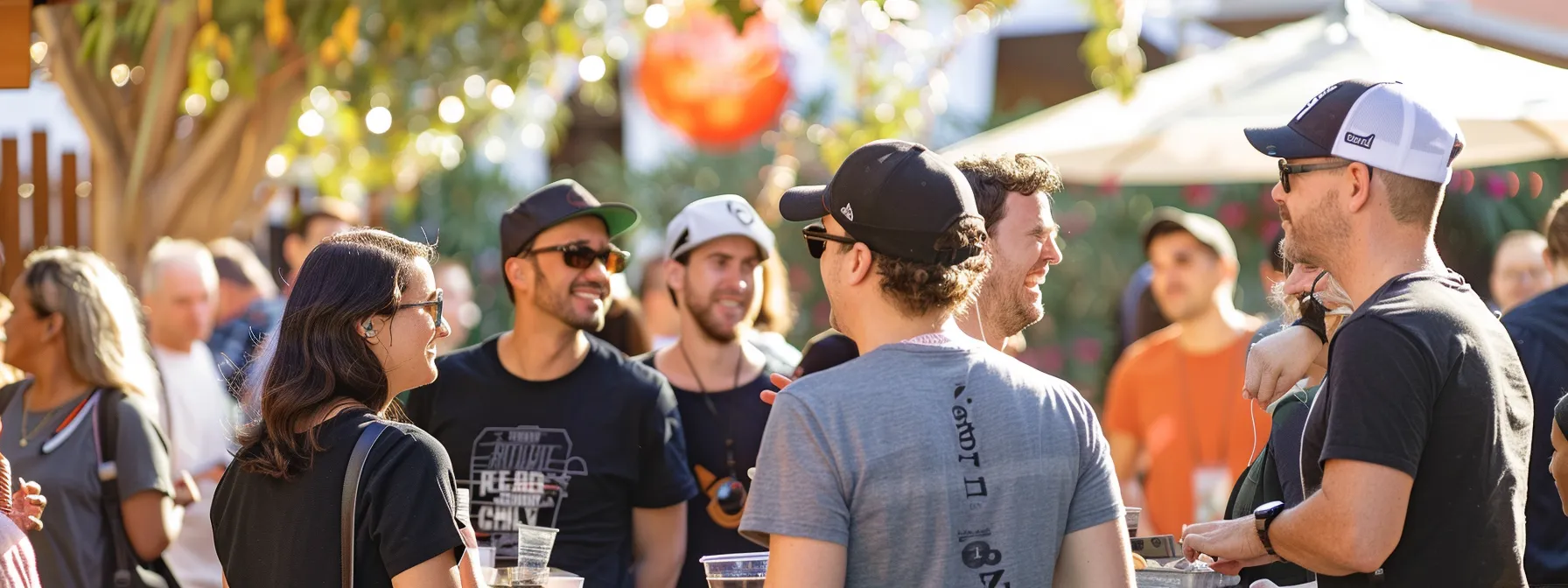
Measuring the success of custom apparel initiatives is essential for understanding their impact on brand visibility. This includes tracking increases in brand mentions and visibility, analyzing sales data linked to apparel campaigns, and gathering valuable feedback through surveys and reviews. Additionally, assessing the return on investment (ROI) for apparel projects provides insights into their effectiveness and guides future strategies.
By employing these methods, businesses can evaluate the tangible benefits of their custom apparel efforts, ensuring that their promotional strategies align with overall brand objectives and resonate with their target audience.
Tracking Increases in Brand Mentions and Visibility
Tracking increases in brand mentions and visibility is essential for evaluating the effectiveness of custom apparel initiatives. Businesses can employ digital analytics tools to monitor social media platforms and online forums where their branded clothing appears. This data not only highlights the extent of brand exposure but also provides insights into customer sentiment, helping to determine if the apparel resonates positively with the target audience.
Furthermore, organizations can correlate spikes in brand mentions with specific promotional campaigns featuring custom apparel. For example, if a company launches a new line of branded t-shirts at an event and notices a subsequent increase in online discussions and social media tags, it indicates a successful strategy. This information is crucial for refining future marketing efforts, ensuring that promotional products continue to enhance brand visibility effectively.
Analyzing Sales Data Linked to Apparel Campaigns
Analyzing sales data linked to apparel campaigns is crucial for measuring the effectiveness of custom apparel as a marketing tool. By closely monitoring sales increases in the period following a promotional campaign, businesses can identify direct correlations between the apparel distribution and consumer purchase behaviors. For instance, if a company launches a new line of branded shirts during a corporate event and observes a spike in related merchandise sales shortly thereafter, it indicates that the apparel has successfully driven consumer interest and engagement.
Sales data should not only reflect overall revenue but also provide insights into customer demographics and preferences. Businesses can segment this data to determine which styles, colors, or designs resonate most with their target audience. Understanding these trends allows organizations to make informed decisions about future campaigns, ensuring that their custom apparel continues to enhance brand visibility and meets customer expectations effectively.
Gathering Feedback Through Surveys and Reviews
Gathering feedback through surveys and reviews is a vital component in measuring the effectiveness of custom apparel initiatives. By soliciting direct input from customers and employees, businesses can gain valuable insights into how well the branded merchandise resonates with their audience. This feedback can reveal preferences related to design, comfort, and overall appeal, helping brands to refine their approaches and enhance brand visibility.
Implementing regular surveys following apparel distribution allows companies to assess both satisfaction and engagement levels. For instance, businesses might ask customers to rate their experiences with custom apparel on social media or during events. Analyzing this data not only informs future design choices but also identifies potential areas for improvement, ultimately strengthening customer loyalty and driving advocacy for the brand:
Assessing Return on Investment for Apparel Projects
Assessing the return on investment (ROI) for custom apparel projects is vital for businesses aiming to enhance brand visibility. Organizations can calculate ROI by comparing the costs of custom apparel production and distribution against the resulting sales and marketing outcomes. For example, if a company invests in branded t-shirts for a promotional event and subsequently sees a spike in merchandise sales or increased customer inquiries, it indicates a successful apparel strategy that effectively contributed to brand visibility.
Additionally, monitoring engagement metrics such as social media mentions, customer feedback, and participant responses can provide insights into the effectiveness of the apparel initiatives. By evaluating these factors, companies can identify which designs and marketing strategies resonate with their target audience, enabling them to allocate resources more efficiently for future campaigns. This structured assessment ultimately helps businesses refine their approach to custom apparel, ensuring it aligns with overall marketing objectives and yields the desired impact on brand recognition and loyalty:
Case Studies: Brands That Boosted Visibility With Custom Apparel

Case Studies: Brands That Boosted Visibility With Custom Apparel
This section explores compelling case studies highlighting the significant impact of custom apparel on brand visibility. The success story of a startup showcases how strategic apparel marketing can enhance brand awareness. Next, an established company’s rebranding efforts through custom clothing illustrate the power of visual identity. Lastly, innovative apparel marketing tactics underline key lessons learned for future campaigns.
Success Story of a Startup’s Brand Awareness Growth
A recent case study of a tech startup reveals how custom apparel significantly enhanced its brand visibility and awareness. By designing eye-catching t-shirts featuring their logo and tagline, the startup created a buzz during local tech events. The vibrant apparel not only attracted attention but also fostered a sense of community among attendees, resulting in increased engagement with potential customers.
As a result of their custom apparel strategy, the startup observed a measurable increase in social media mentions and brand recognition within just a few months. Their approach included distributing these branded items during promotional events and encouraging employees to wear them daily, effectively transforming their audience into passionate brand advocates. Key factors contributing to their success include:
- Creating visually appealing and memorable designs.
- Distributing apparel at high-traffic events to maximize visibility.
- Encouraging employee participation to bolster brand representation.
How an Established Company Rebranded Through Apparel
An established beverage company recently undertook a comprehensive rebranding initiative through custom apparel that effectively revitalized its market presence. By introducing sleek, modern designs on high-quality t-shirts and hats that prominently featured their new logo, the company successfully aligned its visual identity with its forward-thinking vision. This strategic shift not only attracted new customers but also rekindled interest among existing clients, demonstrating the impactful role of custom clothing in brand transformation.
The rebranding campaign leveraged custom apparel in various promotional events, fostering visibility and engagement. Participants eagerly donned the new merchandise, enhancing the sense of community and brand loyalty. As the apparel circulated at festivals and corporate events, measurable increases in brand recognition were observed, including a noticeable uptick in social media mentions and customer inquiries:
Lessons Learned From Innovative Apparel Marketing Tactics
Brands that engage in innovative apparel marketing tactics gain valuable insights into enhancing their visibility. By experimenting with diverse promotional strategies, companies can identify which designs resonate best with their target audience. Utilizing data analytics to track customer responses enables businesses to refine their approaches and effectively align their apparel offerings with consumer preferences.
Another key lesson learned is the importance of community engagement through custom apparel. Successful brands often create campaigns that encourage customers to share their experiences on social media, thus amplifying their reach. This user-generated content not only fosters a sense of belonging among customers but also serves as organic endorsements that enhance brand credibility and visibility:
- Implement diverse promotional strategies to find the best designs.
- Leverage data analytics to track customer responses and preferences.
- Create campaigns for customers to share their experiences online.
- Encourage user-generated content to build organic endorsements.
- Foster a sense of community to enhance brand credibility.
Conclusion
Enhancing brand visibility through custom apparel is a powerful strategy that fosters recognition, loyalty, and engagement. By effectively integrating quality materials, thoughtful design, and targeted marketing efforts, businesses can transform customers and employees into enthusiastic brand ambassadors. Companies that leverage limited edition items, loyalty programs, and influencer collaborations significantly amplify their impact in the marketplace. Embracing these strategies not only bolsters a brand’s presence but also cultivates a lasting emotional connection with audiences, solidifying its position in a competitive landscape.


